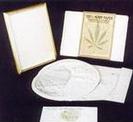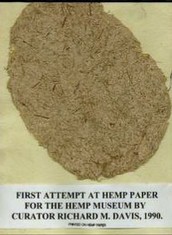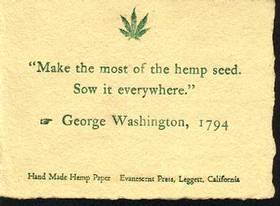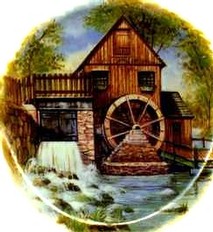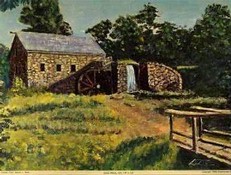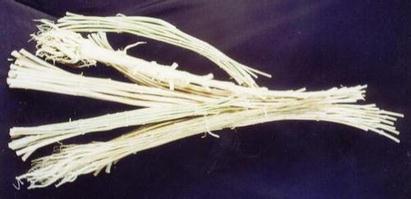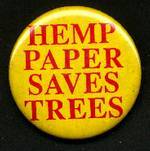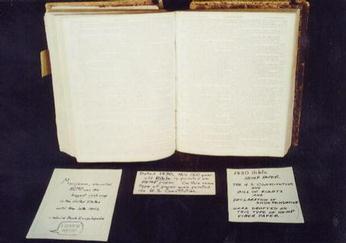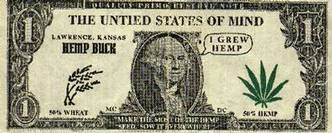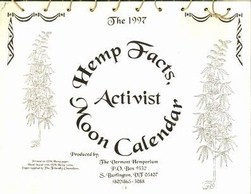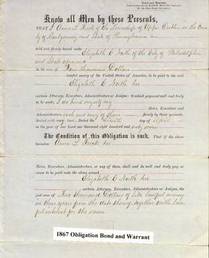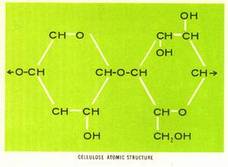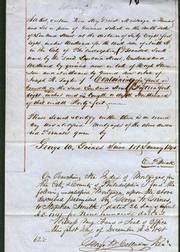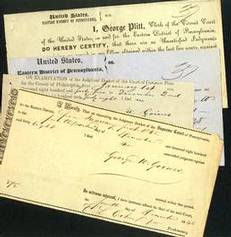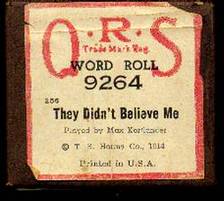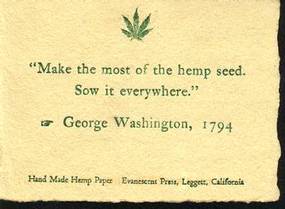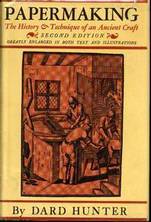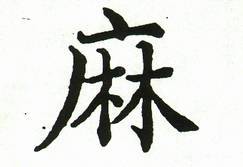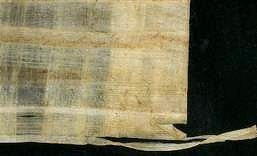 
USA ヘンプ・ミュージアム
 館長から皆さまへ
館長から皆さまへ ヘンプの歴史
ヘンプの歴史 ヘンプと農業
ヘンプと農業 ヘンプの医療と健康
ヘンプの医療と健康 ヘンプ食品
ヘンプ食品 ヘンプ織物
ヘンプ織物 ヘンプ縄と糸
ヘンプ縄と糸  ヘンプパルプ紙
ヘンプパルプ紙 ヘンプ・パルプ紙
ヘンプ・パルプ紙 紙の年代記
紙の年代記 ヘンプ紙再考
ヘンプ紙再考 ヘンプ・ローリングペーパー
ヘンプ・ローリングペーパー 関連図書
関連図書 ヘンプ建材
ヘンプ建材 ヘンプ燃料
ヘンプ燃料 ヘンプ原料
ヘンプ原料 ヘンプ溶剤
ヘンプ溶剤 ヘンプ・プラスチック
ヘンプ・プラスチック ヘンプと環境
ヘンプと環境 ヘンプと娯楽と精神世界
ヘンプと娯楽と精神世界 ヘンプと法律
ヘンプと法律 ヘンプと政治
ヘンプと政治 ヘンプ貢献者
ヘンプ貢献者 ミュージアム図書館
ミュージアム図書館 Topに戻る
Topに戻る |
|
Every acre of hemp grown for paper or particle board saves four acres of trees. Hemp paper is more recyclable than tree paper, and its production does not require chlorine bleach or cause dioxin pollution. The Hemp Paper Room is about much more than I ever expected. From the first discovery of writing or drawing, people have looked for materials on which to write or draw. Walls of caves, bones, bamboo strips, silk, clay tablets, wood, metals, and papyrus (laminated grass material) were written on for thousands of years prior to the invention of papermaking. True paper involves the use of pulped material in the manufacture of products.
(left)Some of the first boxes made by the Curator.Photo: Bill Bridges I went to a Fiber Fair at the Mateel Center in Garberville and sat in on a class in papermaking with John Stahl. It was there that I saw and touched the first piece of 100% hemp paper, made by school kids! I bought some of their paper for the museum.
For those wanting a detailed history of papermaking see: PAPERMAKING: The History & Technique of an Ancient Craft by Dard Hunter, 1943 & 1947. Alfred A. Knopf, New York.
Hunter stated (p.4): "Ifman may now be considered as having reached a high state of civilization his gradual development is more directly due to the inventions of paper and printing than all other factors" And all the way along this path hemp was there. From the first paper, the first printed document, the first book, to the best paper, and to our most cherished documents hemp was part of that history. For the first 500 years China kept the secret of papermaking from therest of the world. This gave China an incredible edge in new inventions of paper and many of the uses of paper we take for granted such as paper money, playing cards, wallpaper, books, and many others originated in China.
B.C. 2200. Prisse manuscript on papyrus, probably the oldest Egyptian document. Papyrus is a built-up, laminated material and should not be confused with true paper, which was not invented until about A.D. 105.
[A.D. 1937. Mechanical Engineering magazine declared hemp the most profitable and desirable crop that can be grown. (Conrad, ibid.)] [A.D. 1938. Popular Mechanics magazine dubbed hemp the A New Billion Dollar Crop and predicted a bonanza for farmers and industry alike, in a report prepared in 1937. With its 25,000 viable uses, hemp will provide thousands of jobs for American workers throughout the land, reported the magazine.]
|


